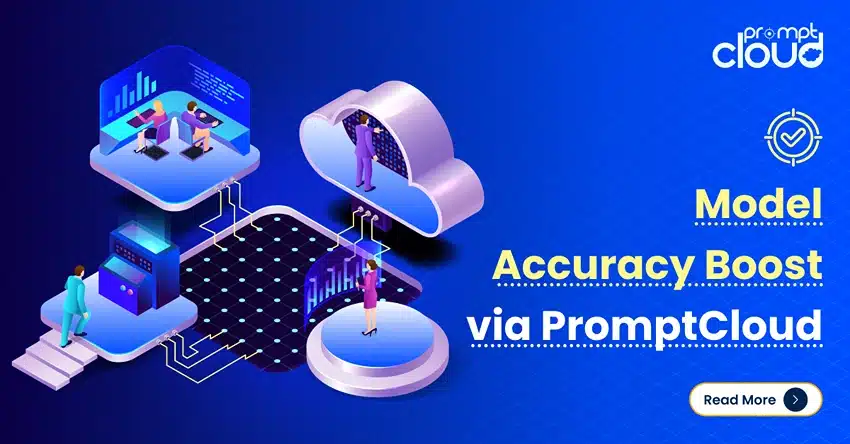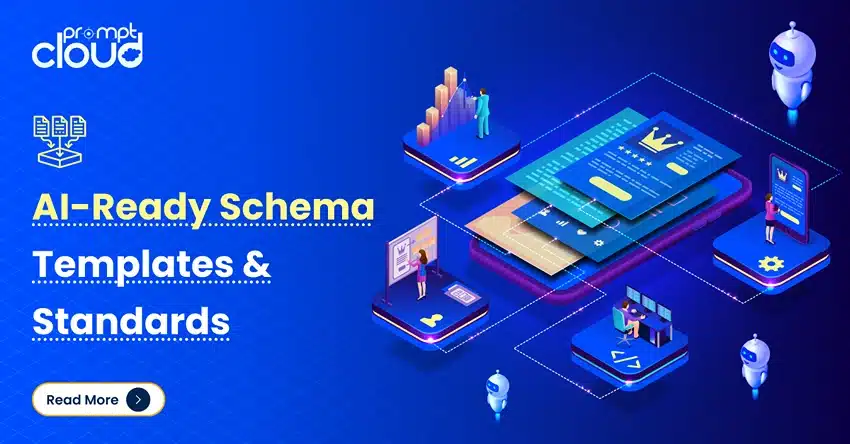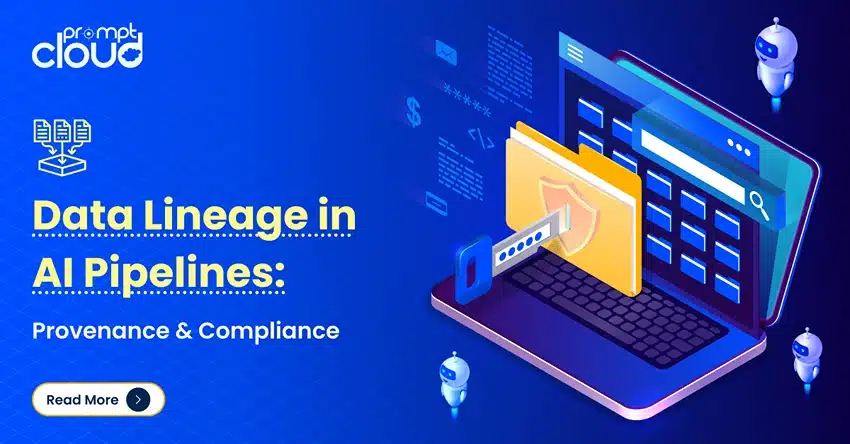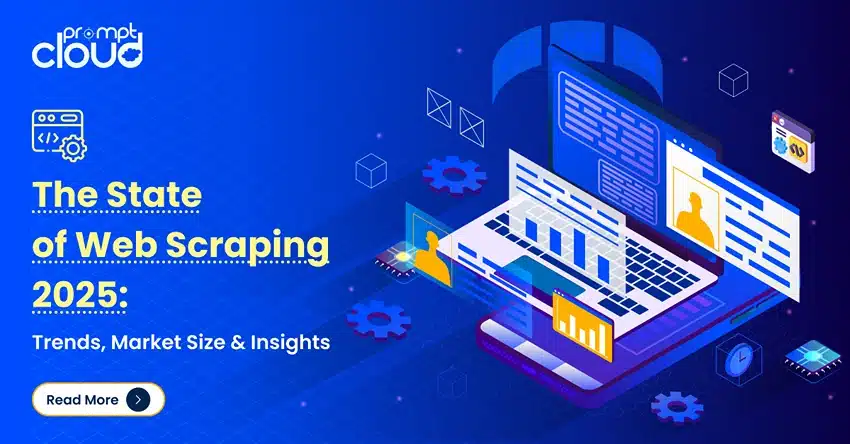
**TLDR** This guide explores how a Python scraper can be used to collect AliExpress data at scale, covering what it does well (flexibility, deeper data access, customization) and where it struggles (anti-bot blocks, legal concerns, and scalability limits). We’ll also compare it with the AliExpress API, explain common use cases like price monitoring and review analysis, and show when it makes sense to move from DIY scraping to professional website data scraping services.
AliExpress Data: More Than Just Numbers Behind Products
For years, AliExpress has been seen as just another place to snag low-cost gadgets, fashion, or home goods. But here’s the shift most people miss: AliExpress isn’t just a shopping site, it’s a global data engine. And if you’re ignoring the data, you’re missing the real value behind those product listings.
Think about the scale for a second. AliExpress carries over 100 million products and attracts millions of daily visitors from every corner of the world. That’s not just retail volume, it’s a live feed of market demand, shifting prices, consumer sentiment, and emerging product trends.
Here’s the kicker: businesses, researchers, and developers are already tapping into this. Want to see how competitors are pricing? Track AliExpress product data. Want to understand what customers think? Dig into the reviews. Curious if a product is gaining traction or losing steam? Seller ratings and stock availability tell the story before most industry reports ever will.
This is why more teams are experimenting with a Python scraper or turning to professional website data scraping services. The goal isn’t just to collect numbers, it’s to transform raw marketplace data into insights you can act on.
The question isn’t whether AliExpress data matters. It’s how quickly you figure out how to use it, because in a market this competitive, those who see the signals first usually win.
What Makes the AliExpress Data Terrain Worth Exploring
Image Source: Statista
As of mid-2025, AliExpress is pulling in close to 600 million visits every single month, cementing itself as one of the most-visited e-commerce platforms worldwide. That’s not just a shopping surge, it’s a constant feed of consumer behaviour at a massive scale.
AliExpress isn’t simply a place to buy cheap gadgets or trending sneakers. It’s a mirror of how people shop across more than 200 countries and regions. Every search, click, review, and purchase leaves behind clues: what products are heating up, which categories are slowing down, how price wars play out, and where customers lose trust.
Now, picture what that means for businesses, analysts, or even early-stage data professionals dipping their toes into market research. AliExpress isn’t just retail, it’s a real-time dataset waiting to be decoded.
- Product data at massive scale: From kitchen appliances to fashion accessories, AliExpress lists practically everything. That makes it a live trend-tracker, showing which categories are rising or falling in demand long before official industry reports catch up.
- Pricing intelligence in motion: Discounts, flash sales, and seller competition mean prices on AliExpress shift constantly. Tracking those shifts isn’t just about watching numbers; it’s about spotting gaps in the market and understanding how global sellers react under pressure.
- AliExpress reviews as consumer signals: Imagine thousands of product reviews piling up each day. That’s raw consumer sentiment, real people talking about quality, durability, shipping times, and whether the product matched expectations. Decode those patterns, and you can see why buyers stay loyal or move on.
- Seller ratings and trust metrics: On AliExpress, every seller lives or dies by their reputation. Ratings, shipping reliability, and response times don’t just help shoppers decide; they give you a window into which sellers are gaining ground, and which ones are quietly losing credibility.
AliExpress isn’t just an online store. It’s a live lab of global commerce, and the data it generates can give businesses a head start on pricing, product development, and customer insights, if they know how to capture it.
What makes this even more powerful is the scale. AliExpress draws tens of millions of daily visits, which means any patterns you spot aren’t niche; they’re broad consumer shifts playing out in real time.
Here’s how AliExpress becomes a live dashboard for your insights:
| Data Type | What You Learn | Real-World Example |
| Price Fluctuations | How often do products discount or surge | Spot when fast-fashion prices drop, so you can match early |
| Review Trends | What shoppers love (or hate) and why | Detect growing complaints about item quality or promo delays |
| Availability Metrics | Which items are frequently out of stock | Identify fast-moving inventory categories before trends shift |
| Seller Ratings | Who’s gaining trust and who’s slipping | See if a new seller gains steam via above-average reviews |
That’s why early-stage data professionals, developers, and researchers are so interested. They see AliExpress not as a shopping site, but as a living dataset that can answer questions like:
- What products are heating up in global markets?
- How are sellers adjusting their pricing against competition?
- What pain points do customers keep mentioning in reviews?
Here’s a snapshot of what that looks like in practice:
| Product ID | Product Name | Price (USD) | Avg. Rating | Review Count | Stock Status | Seller Rating |
| 45890321 | Wireless Earbuds V5.3 | 29.99 | 4.6 | 12,345 | In Stock | 95% |
| 98347210 | Smartwatch Pro 2025 Edition | 64.50 | 4.2 | 8,910 | Low Stock | 88% |
| 76359822 | Portable Mini Blender | 19.75 | 4.8 | 15,032 | In Stock | 97% |
| 11823009 | Women’s Running Sneakers | 45.00 | 4.4 | 5,645 | Out of Stock | 92% |
And here’s where the real debate starts: do you pull this information through the official AliExpress API, or do you fire up a Python scraper to dig directly into the site? Both paths have advantages and some very real drawbacks.
If you want to validate privacy compliance and data residency needs for your web data use case, keep it simple
Connect with our data experts.
What a Python Scraper Can Do on AliExpress
Here’s the straight truth: if you want flexibility with AliExpress data, a Python scraper is often the first tool people turn to. Why? Because, unlike the official AliExpress API, a scraper doesn’t just hand you what the platform wants you to see. It lets you decide what matters and then go get it.
Think of a Python scraper as your own custom “data camera.” You can point it at product listings, reviews, or seller pages, and decide exactly which details you want to capture. The real power is that you’re not locked into fixed endpoints or rate limits; you can scrape the data as it appears live on the site.
Popular Python Libraries for Scraping
Most scrapers start simple and then evolve:
- Requests + BeautifulSoup: Great for pulling down and parsing product pages quickly when you’re testing or learning.
- Scrapy: A heavyweight framework built for large-scale crawling, with built-in features for managing requests, pipelines, and speed.
- Selenium or Playwright: When AliExpress uses heavy JavaScript rendering, these libraries simulate a browser so you can capture data that static requests miss.
What You Can Pull with a Python Scraper
Here are a few of the most common AliExpress scraping use cases:
- Price Tracking: Scraping product pages regularly gives you a play-by-play of how prices rise and fall. For example, you could watch a smartwatch that’s $64.50 today and track whether it dips ahead of holiday promotions.
- Review Aggregation: Python scrapers can collect thousands of AliExpress reviews at scale, letting you run sentiment analysis. Suddenly, you can see if a product is praised for “durability” or constantly flagged for “slow shipping.”
- Product Availability Monitoring: Sellers run out of stock more often than you think. A scraper helps you see which items vanish from inventory, which ones get restocked, and how quickly it happens.
- AliExpress Tracking Data: Beyond just the products, some teams use scrapers to follow shipping times or fulfillment data, uncovering how reliable sellers are.
Quick-Start: A Python Scraper Example (Playwright)
AliExpress renders a lot of content with JavaScript. That means a plain request call often misses what you see in the browser. A headless browser, like Playwright, lets you load the page, wait for content, and then extract what’s visible. Think of this as your clean, dependable baseline before you scale.
What it does:
- Opens an AliExpress search results page
- Waits for product tiles to render
- Extracts product title, price, rating, reviews count, and product URL
- Prints a small dataset you can push into a database later
python
# Requires: pip install playwright
# Then run once: playwright install
# Optional (recommended for scale): pip install pydantic
import asyncio
from playwright.async_api import async_playwright
SEARCH_URL = “https://www.aliexpress.com/wholesale?SearchText=portable+mini+blender”
async def scrape_aliexpress_search(search_url: str, max_items: int = 20):
async with async_playwright() as p:
browser = await p.chromium.launch(headless=True)
context = await browser.new_context(
user_agent=(
“Mozilla/5.0 (Windows NT 10.0; Win64; x64) “
“AppleWebKit/537.36 (KHTML, like Gecko) “
“Chrome/120.0.0.0 Safari/537.36”
),
viewport={“width”: 1366, “height”: 768}
)
page = await context.new_page()
# Load and wait for product tiles (AliExpress changes selectors over time)
await page.goto(search_url, wait_until=”domcontentloaded”)
# Adjust this selector if AliExpress changes markup
await page.wait_for_selector(“a[product-title], a[data-product-title], .product-title”, timeout=15000)
# Evaluate in page context for speed; adjust selectors as needed
results = await page.evaluate(“””
() => {
const items = [];
// Try multiple selectors to be resilient to markup changes
const cards = document.querySelectorAll(‘[data-product-id], .list–gallery–C2f2tVm h2 a, a[product-title]’);
for (const el of cards) {
const root = el.closest(‘a’) || el;
const title = (root.getAttribute(‘product-title’)
|| root.getAttribute(‘data-product-title’)
|| root.textContent || ”).trim();
// Price selectors vary; grab the first plausible text
const priceEl = root.closest(‘div’)?.querySelector(‘[class*=”price”], .multi–price-sale–U-S0jtj’);
const priceText = priceEl ? priceEl.textContent.replace(/s+/g, ‘ ‘).trim() : null;
// Ratings and review counts often sit nearby
const ratingEl = root.closest(‘div’)?.querySelector(‘[aria-label*=”out of 5″], [class*=”rating”]’);
const ratingText = ratingEl ? ratingEl.textContent.replace(/s+/g, ‘ ‘).trim() : null;
const reviewsEl = root.closest(‘div’)?.querySelector(‘[class*=”reviews”], [aria-label*=”reviews”]’);
const reviewsText = reviewsEl ? reviewsEl.textContent.replace(/s+/g, ‘ ‘).trim() : null;
const href = root.href || null;
items.push({
title,
price: priceText,
rating: ratingText,
reviews: reviewsText,
url: href
});
}
return items;
}
“””)
await browser.close()
# Keep the first N items and drop empties
cleaned = []
for r in results[:max_items]:
if r.get(“title”) and r.get(“url”):
cleaned.append(r)
return cleaned
if __name__ == “__main__”:
data = asyncio.run(scrape_aliexpress_search(SEARCH_URL, max_items=12))
for row in data:
print(row)
How to adapt it quickly:
- Swap SEARCH_URL with any AliExpress search (for example, SearchText=wireless+earbuds).
- If selectors break (it happens), inspect the page in your browser’s DevTools and update the querySelectorAll calls.
- Pipe the data into a CSV, database, or analytics pipeline once you’re happy with reliability.
A note on ethics and compliance (important):
Always follow your local laws and review AliExpress’s Terms of Service. Respect robots.txt guidance where applicable, throttle your requests, and avoid disrupting site operations. If you need guaranteed uptime, compliance guardrails, and SLAs, managed website data scraping services are built for this.
Alternative: Scrapy Spider Skeleton (For Larger Crawls)
When you start thinking “category-wide” or “thousands of products,” Scrapy shines. It’s fast, structured, and easier to scale with pipelines, middlewares, and queues.
python
# Requires: pip install scrapy
import scrapy
class AliExpressProductSpider(scrapy.Spider):
name = “aliexpress_products”
allowed_domains = [“aliexpress.com”]
start_urls = [
“https://www.aliexpress.com/wholesale?SearchText=wireless+earbuds”
]
custom_settings = {
“DOWNLOAD_DELAY”: 1.0, # Respectful pacing
“RANDOMIZE_DOWNLOAD_DELAY”: True,
“AUTOTHROTTLE_ENABLED”: True,
“AUTOTHROTTLE_START_DELAY”: 1.0,
“AUTOTHROTTLE_MAX_DELAY”: 5.0,
“CONCURRENT_REQUESTS”: 4,
“DEFAULT_REQUEST_HEADERS”: {
“User-Agent”: (
“Mozilla/5.0 (Windows NT 10.0; Win64; x64) “
“AppleWebKit/537.36 (KHTML, like Gecko) “
“Chrome/120.0.0.0 Safari/537.36”
),
“Accept-Language”: “en-US,en;q=0.9”,
},
}
def parse(self, response):
# Update selectors as AliExpress changes markup
for card in response.css(‘[data-product-id], .list–gallery–C2f2tVm h2 a’):
item = {}
item[“title”] = card.css(“::attr(product-title), ::attr(data-product-title)”).get()
or card.css(“::text”).get(default=””).strip()
item[“url”] = response.urljoin(card.attrib.get(“href”, “”))
# Walk up the DOM to find price/rating blocks
container = card.xpath(“./ancestor::div[1]”)
item[“price”] = container.css(‘[class*=”price”], .multi–price-sale–U-S0jtj ::text’).get(default=””).strip()
item[“rating”] = container.css(‘[aria-label*=”out of 5″], [class*=”rating”] ::text’).get(default=””).strip()
item[“reviews”] = container.css(‘[class*=”reviews”], [aria-label*=”reviews”] ::text’).get(default=””).strip()
if item[“title”] and item[“url”]:
yield item
# Follow pagination if present
next_page = response.css(‘a[aria-label=”Next”]::attr(href), a.next::attr(href)’).get()
if next_page:
yield response.follow(next_page, callback=self.parse)
When to use this:
- You want structured exports (JSON/CSV) with item pipelines.
- You’ll add middlewares for retries, proxies, or CAPTCHA strategies later.
- You plan to schedule crawls and manage them centrally.
Lightweight Requests + BeautifulSoup (For Quick Prototyping)
If a specific page renders static HTML (it happens on some pages or with params), a simple requests + BeautifulSoup pass can be enough for early testing.
python
# Requires: pip install requests beautifulsoup4
import requests
from bs4 import BeautifulSoup
headers = {
“User-Agent”: (
“Mozilla/5.0 (Windows NT 10.0; Win64; x64) “
“AppleWebKit/537.36 (KHTML, like Gecko) “
“Chrome/120.0.0.0 Safari/537.36”
),
“Accept-Language”: “en-US,en;q=0.9”,
}
url = “https://www.aliexpress.com/wholesale?SearchText=smartwatch+2025”
resp = requests.get(url, headers=headers, timeout=20)
soup = BeautifulSoup(resp.text, “html.parser”)
data = []
for card in soup.select(‘[data-product-id], .list–gallery–C2f2tVm h2 a’):
title = card.get(“product-title”) or card.get(“data-product-title”) or card.get_text(strip=True)
href = card.get(“href”)
if not (title and href):
continue
price_el = card.find_parent(“div”).select_one(‘[class*=”price”], .multi–price-sale–U-S0jtj’)
rating_el = card.find_parent(“div”).select_one(‘[aria-label*=”out of 5″], [class*=”rating”]’)
reviews_el = card.find_parent(“div”).select_one(‘[class*=”reviews”], [aria-label*=”reviews”]’)
data.append({
“title”: title.strip(),
“url”: requests.compat.urljoin(url, href),
“price”: price_el.get_text(strip=True) if price_el else None,
“rating”: rating_el.get_text(strip=True) if rating_el else None,
“reviews”: reviews_el.get_text(strip=True) if reviews_el else None,
})
for row in data[:10]:
print(row)
Reality check: many AliExpress pages are dynamic. If this returns sparse data, switch to the Playwright version above.
Before You Scale This
- Anti-bot measures exist. Expect CAPTCHA, rate limiting, and markup changes.
- Throttle and randomize. Use delays and backoff logic; don’t hammer endpoints.
- Consider the AliExpress API. For certain use cases, the official aliexpress api might be smoother, even if it’s more limited.
- Plan the upgrade path. If your team needs consistent delivery, governance, and volume, moving to managed website data scraping services avoids downtime and maintenance overhead.
A Real-World Example
Imagine you’re tracking “portable mini blenders” on AliExpress. A Python scraper could collect:
- Current price across multiple sellers
- Average rating and total review count
- Stock status (in stock vs low stock vs sold out)
- Seller trust score
By running this daily or weekly, you’re essentially building your own private “AliExpress dashboard” that you can filter, compare, and act on.
But before you run too far ahead, it’s worth noting: while Python scrapers give you unmatched flexibility, they don’t come without roadblocks. And AliExpress has plenty of them.
Where a Python Scraper Falls Short in Scraping AliExpress
Here’s the part nobody likes to talk about: scraping AliExpress isn’t a free pass to endless data. Yes, Python scrapers give you flexibility, but the minute you start scaling beyond a handful of products, reality sets in.
1. AliExpress Fights Back with Anti-Bot Shields
AliExpress doesn’t want unlimited, automated scraping. They deploy CAPTCHA, bot-detection scripts, and request throttling to block suspicious traffic. If your scraper starts looking less like a shopper and more like a machine, you’ll hit roadblocks fast.
Picture this: You’ve built a neat scraper that’s humming along, and overnight, every request starts returning a CAPTCHA page instead of product details. That’s AliExpress reminding you who’s in control.
2. Fragile by Design: Layouts Keep Changing
AliExpress tweaks its site design regularly. The selectors your scraper depends on today might be gone tomorrow. Suddenly, your code isn’t returning prices, it’s returning blanks.
Maintaining a Python scraper isn’t a one-and-done project. It’s a constant cycle of inspect → fix → rerun, which eats up time and resources the bigger you scale.
3. Scale Hits a Wall
Scraping one category page with a few hundred products? No problem. Scraping thousands of product pages daily, across dozens of categories, while keeping it all clean, de-duplicated, and structured? That’s where your laptop or even your server starts crying.
Python scrapers aren’t inherently built for enterprise-grade throughput. To scale, you’ll need a full crawling infrastructure: proxy networks, distributed workers, error handling, and storage pipelines. That’s a lot more than just a script.
4. The Legal and Ethical Gray Zone
This is the big one. Scraping AliExpress, like scraping any marketplace, sits in a gray area legally and ethically. Their Terms of Service don’t allow unrestricted scraping, and some jurisdictions enforce stricter rules around data collection.
That doesn’t mean it’s impossible, but it does mean you need to tread carefully. Respectful scraping (slowing requests, following compliance standards, not harvesting sensitive information) is one thing. Trying to brute-force the platform is another way, and could get your IPs or accounts banned.
The takeaway? A Python scraper is powerful for flexible, small-to-medium scale experiments. But the bigger you go, the more fragile and risky it gets. That’s why the conversation naturally shifts toward the AliExpress API and professional website data scraping services, because when scale and reliability matter, DIY can only take you so far.
AliExpress API vs DIY Python Scraper vs Web Scraping Service Provider: A Real-World Comparison
Here’s where the rubber meets the road. If you want AliExpress data, you’ve really got three doors to choose from: the official AliExpress API, a DIY scraper, or a professional web scraping service provider. Each path gets you data, but the experience and the trade-offs are very different.
Think of it like this:
- The API is the official doorway. It’s clean, structured, and safe but you only get access to the rooms AliExpress lets you enter.
- The Python scraper is like sneaking in through the window. You get to peek at everything, but you’ll constantly deal with alarms, broken windows, and the need to patch things up.
- The scraping service provider is hiring a professional who builds you a side entrance, reliable, scalable, and maintained, but at a cost.
Here’s how they stack up in practice:
| Factor | AliExpress API | DIY Python Scraper | Web Scraping Service Provider |
| Data Access | Limited endpoints, structured product/affiliate data only | Flexible: can scrape products, reviews, sellers, anything visible | Broad + customizable: full product, reviews, pricing, category, competitive insights |
| Ease of Use | Plug-and-play if you have developer docs | Requires coding + constant maintenance | Hands-off: provider delivers clean datasets or APIs |
| Scalability | Constrained by rate limits and official quotas | Tough to scale beyond thousands of pages daily | Built to scale: millions of records, global coverage |
| Reliability | High, until AliExpress changes API policies | Fragile: site layout changes break scrapers | High: maintained pipelines, anti-bot resilience |
| Compliance & Legal Risk | Safe (officially allowed) | Risky: scraping violates ToS in some regions | Providers manage compliance frameworks and governance |
| Costs | Free or low (with affiliate program) | Cheap upfront, expensive in developer hours | Higher direct cost, lower hidden/maintenance costs |
| Best For | Small affiliate projects, structured product feeds | Experiments, POCs, flexible one-off projects | Enterprises, researchers, or teams needing guaranteed scale & uptime |
Which One Should You Choose?
- If you’re testing the waters, building a hobby project, or just need structured product feeds, the AliExpress API is the cleanest start.
- If you want freedom and don’t mind firefighting broken scripts, a DIY Python scraper will get you further, but expect headaches.
- If you’re serious about scaling insights across thousands or millions of products and want to sleep at night, a website data scraping service is the grown-up option.
The reality is, most teams start with DIY and quickly realize the hidden costs: time, fragility, and risk. That’s why mature eCommerce players often graduate to managed scraping providers for ecommerce data, because the stakes (and the scale) are simply too high for duct-taped code.
Practical Applications of AliExpress Data Scraping (With Sample Datasets)
Here’s the thing: AliExpress data isn’t just “nice to have.” It’s raw fuel for smarter moves. Whether you use the AliExpress API, a Python scraper, or fully managed website data scraping services, the output should look like tidy tables you can plug into BI tools or notebooks. Below are the most common use cases, plus a sample dataset for each, so you can visualize the outcome.
1) Price Intelligence That Moves with the Market
On AliExpress, prices change fast, flash sales, bundles, and competitor reactions happen daily. Scraping price data on a schedule lets you benchmark your pricing, spot undercutting early, and time promotions.
Sample dataset (price tracking across sellers):
| asin_like | product_title | seller_id | seller_name | list_price_usd | sale_price_usd | discount_pct | ship_to | est_ship_days | last_seen | product_url |
| AX-73291 | Wireless Earbuds V5.3 | S-88230 | SoundMax Store | 34.99 | 29.99 | 14.3 | US | 9–15 | 2025-08-18 06:00:00 | … |
| AX-67610 | Wireless Earbuds V5.3 | S-11821 | AudioPro Direct | 33.50 | 27.80 | 17.1 | DE | 7–12 | 2025-08-18 06:00:00 | … |
| AX-56002 | Wireless Earbuds V5.3 | S-77109 | MusicHub Outlet | 31.90 | 31.90 | 0.0 | IN | 12–20 | 2025-08-18 06:00:00 | … |
How you’d use it: if your category drops ~15% ahead of the holiday season, you see it in the discount column before it hits your margins. A Python scraper scheduled daily can alert you to sudden price cuts; a provider can scale this across thousands of SKUs without breaking.
2) Review Aggregation = Real Consumer Sentiment
AliExpress reviews are blunt and plentiful. Scraping them at scale surfaces the “why” behind ratings, durability, sizing, shipping delays, and those patterns turn directly into roadmap and CX decisions.
Sample dataset (review stream for sentiment):
| product_id | review_id | rating | review_text | lang | country | review_date | votes_helpful | keywords_extracted |
| 76359822 | R-8829210 | 5 | “Battery lasts all day, sound is crisp.” | en | US | 2025-08-16 | 42 | battery life; sound quality |
| 76359822 | R-8829511 | 3 | “Good sound, but the charger stopped working in a week” | en | GB | 2025-08-17 | 9 | charger issue; reliability |
| 76359822 | R-8829710 | 4 | “Arrived early, box was a little dented.” | en | AU | 2025-08-17 | 3 | fast shipping; packaging condition |
How you’d use it: monthly sentiment curves by keyword tell you what to fix (charger failure) versus what to feature (battery). An AliExpress web scraper can grab review text and timestamps; the aliexpress api is more constrained here, so teams often pair API feeds with scraping for deeper coverage.
3) Competitive Benchmarking at Category Scale
Every seller fights for visibility. Scraping seller metrics, stock, and velocity shows who’s growing, who’s slipping, and where their pricing is soft.
Sample dataset (seller + inventory signals):
| seller_id | seller_name | category | seller_rating_pct | 30d_new_skus | 30d_oos_events | median_price_usd | 30d_review_growth | refund_rate_pct | last_seen |
| S-77109 | MusicHub Outlet | Audio Accessories | 97 | 12 | 3 | 31.90 | +18% | 1.8 | 2025-08-18 06:00:00 |
| S-11821 | AudioPro Direct | Audio Accessories | 88 | 7 | 8 | 27.80 | +41% | 3.9 | 2025-08-18 06:00:00 |
| S-88230 | SoundMax Store | Audio Accessories | 95 | 9 | 2 | 29.99 | +12% | 2.1 | 2025-08-18 06:00:00 |
How you’d use it: rising review growth + frequent OOS can signal a breakout competitor. That’s your early warning to adjust inventory or pricing. A Python scraper can stitch this from product pages and seller hubs; website data scraping services will add anti-bot resilience and standardized schemas.
4) Product Trend Discovery Before It Hits Mainstream
If you watch new arrivals, bestseller ranks, and review velocity, you can see a category heating up weeks early.
Sample dataset (trend radar across subcategories):
| subcategory | sku_count | 14d_new_arrivals | 14d_avg_price_change | 14d_review_velocity | top_keyword | trend_score (0–100) | note |
| Portable Blenders | 1,245 | 178 | -6.2% | +28% | “usb rechargeable” | 86 | Promo-led price dips |
| ANC Earbuds | 3,902 | 422 | -3.1% | +19% | “hybrid anc” | 79 | Feature-driven demand |
| Smart Rings | 324 | 67 | +2.5% | +44% | “sleep tracking” | 74 | Early adoption; review surge |
How you’d use it: “trend_score” blends growth signals (arrivals, price motion, review velocity). You’d prioritize sourcing or marketing on segments >80 score. A Python scraper can compute these from periodic crawls; managed providers can widen coverage to all major subcategories.
5) AliExpress Tracking and Fulfillment Insights
Delivery reliability impacts conversion and ranking. Scraping shipping estimates and post-order tracking helps you quantify the logistics experience buyers get.
Sample dataset (shipping promises vs reality):
| order_token | product_id | seller_id | ship_from | ship_to | est_days | actual_days | shipping_method | on_time (Y/N) | review_after_delivery |
| OT-99211 | 11823009 | S-88230 | CN | US | 10–18 | 12 | AliExpress Standard | Y | “Arrived early.” |
| OT-99245 | 76359822 | S-11821 | CN | IN | 12–20 | 22 | Cainiao Super Economy | N | “Late delivery.” |
| OT-99277 | 45890321 | S-77109 | CN | DE | 7–12 | 9 | DHL eCommerce | Y | “Fast, box dented.” |
How you’d use it: correlate on_time with ratings to prove fast delivery lifts conversion. If your segment underperforms on logistics, you change shipping options or seller mix. For robust collection here, most teams evolve from DIY to website data scraping services with governance and SLAs.
Why These Matter (and How to Scale Them)
These aren’t just pretty grids. They’re the backbone of dashboards your team can use to make decisions in real time:
- Feed the price table into alerts that tell you when competitors drop below your floor.
- Push review data into a sentiment model to surface quality issues by region.
- Turn the seller & trend tables into weekly category briefings for merchandisers.
- Tie shipping reliability to conversion and refund rates to prove the ROI of better logistics.
You can absolutely start with a Python scraper for a focused pilot. If you need resilience against anti-bot systems, coverage across millions of records, and guaranteed delivery, it’s usually faster (and cheaper long-term) to work with a managed AliExpress scraper via a trusted website data scraping services partner.
Scaling Beyond DIY: When to Choose Website Data Scraping Services
Here’s the truth: every team starts small. A Python script that scrapes a few product pages. Maybe an internal tool hacked together with Scrapy. And for a while, it works. You get your data, build a couple of dashboards, maybe even pull off a pricing analysis.
But then demand grows. Suddenly, you’re not just tracking 200 products, you need 200,000 across multiple categories, refreshed daily. You’re not just parsing reviews; you need to analyze sentiment in three languages. And you’re not in the mood to rebuild your scraper for the tenth time because AliExpress changed its page markup again.
That’s the breaking point. It’s when DIY scraping stops being a scrappy side project and starts becoming a maintenance nightmare.
Why Teams Move to Service Providers
- Scale without fragility: Providers run distributed crawlers with proxy pools and anti-bot systems, meaning you can scale into millions of records without collapsing.
- Structured, clean data: Instead of messy JSON dumps, you get normalized datasets (product tables, review feeds, trend indexes) you can drop into your analytics pipeline.
- Compliance guardrails: Professional scraping vendors build in data governance, throttling, and ToS awareness to reduce legal and ethical risks.
- Support & reliability: Instead of firefighting broken scripts at midnight, you get SLAs and uptime guarantees.
Think of it less as “outsourcing scraping” and more as “outsourcing the headaches.”
Sample Enterprise-Grade Dataset from a Provider
Here’s what the same AliExpress “wireless earbuds” category might look like when scraped at scale by a managed service. Notice the difference in structure, enrichment, and consistency:
| product_id | title | seller_id | seller_name | category | base_price_usd | sale_price_usd | discount_pct | avg_rating | review_count | stock_status | ship_from | ship_to | delivery_est | crawl_date |
| AX-458903 | Wireless Earbuds V5.3 | S-88230 | SoundMax Store | Audio Accessories | 34.99 | 29.99 | 14.3 | 4.6 | 12,345 | In Stock | CN | US | 9–15 days | 2025-08-18 06:00:00 |
| AX-983472 | Smartwatch Pro 2025 Ed. | S-11821 | AudioPro Direct | Wearables | 72.00 | 64.50 | 10.4 | 4.2 | 8,910 | Low Stock | CN | DE | 7–12 days | 2025-08-18 06:00:00 |
| AX-763598 | Portable Mini Blender | S-77109 | KitchenPower | Home Appliances | 21.99 | 19.75 | 10.2 | 4.8 | 15,032 | In Stock | CN | IN | 12–20 days | 2025-08-18 06:00:00 |
This isn’t just scraped HTML. It’s enriched data, cleaned, timestamped, mapped to categories, and ready for integration with BI tools, pricing engines, or machine learning models. That’s the difference between DIY and done-for-you.
The Bottom Line
Python scrapers are great for learning and one-off projects. The AliExpress API is neat if you’re in their affiliate ecosystem. But if your business depends on fresh, reliable, and scalable data, website data scraping services aren’t a luxury; they’re the infrastructure that lets you focus on insights instead of upkeep.
Key Takeaways: What a Python Scraper Can and Can’t Do for AliExpress
After walking through the pros, cons, and alternatives, here’s the distilled truth:
- Python scrapers give you freedom. You can collect product prices, reviews, ratings, seller info, basically anything visible on AliExpress. They’re flexible, customizable, and great for early experiments.
- But they’re fragile at scale. Anti-bot defenses, CAPTCHA, and constant site changes mean you’ll spend more time fixing code than analyzing data once you go beyond a few thousand pages.
- The AliExpress API is safe but limited. It’s officially supported, structured, and reliable, but only exposes what AliExpress wants you to see (mainly affiliate/product data).
- Website data scraping services close the gap. They combine scale, reliability, compliance, and clean delivery. Think “enterprise-ready data pipelines,” not “scripts that break at 2 a.m.”
- The smart path is progression. Start with DIY if you’re testing or learning. Move to the API if you need safe, structured feeds. Graduate to professional services once AliExpress data becomes business-critical.
Why This Matters for You
AliExpress isn’t just another marketplace. With 600 million visits a month, it’s a living signal of global eCommerce behavior. Capturing that data correctly can be the difference between reacting late and moving early, whether it’s pricing, product design, or consumer sentiment.
The question isn’t if you should scrape AliExpress? It’s how far can you go before you outgrow DIY?
Don’t Just Shop AliExpress, Read It Like a Market
AliExpress isn’t just another marketplace; it’s a real-time signal of global demand. With hundreds of millions of visits every month, it’s where price wars play out, reviews pile up, and product trends emerge long before they hit mainstream.
Yes, a Python scraper can get you far. It’s flexible, hackable, and perfect for testing ideas. But at scale, the cracks show, fragile scripts, anti-bot walls, and endless upkeep. The AliExpress API is safe but limited. And that’s why most businesses serious about competing in eCommerce eventually lean on website data scraping services: because clean, reliable data pipelines win over duct-taped scripts every single time.
The real takeaway? AliExpress data isn’t just “numbers.” It’s a roadmap to pricing smarter, moving earlier, and seeing consumer behavior before your competitors do. The question is: are you ready to start reading it that way?
Ready to Turn AliExpress Data Into an Advantage?
Stop guessing. Start scaling. At PromptCloud, we deliver AliExpress datasets that are structured, reliable, and tailored to your use case, whether it’s pricing intelligence, review mining, or product trend analysis.
Schedule a Demo today and see how we can help you turn AliExpress into your next competitive edge.
If you want to validate privacy compliance and data residency needs for your web data use case, keep it simple
Connect with our data experts.
FAQs
1. Is scraping AliExpress legal?
Scraping AliExpress falls into a gray area. The platform’s Terms of Service don’t allow unrestricted scraping, and anti-bot systems are there to enforce it. That said, many businesses still scrape AliExpress data responsibly, throttling requests, avoiding sensitive info, and following compliance best practices. If legality and scale are concerns, working with a website data scraping service that bakes in governance is the safer path.
2. What kind of data can I collect using an AliExpress scraper?
Whether you build a Python scraper yourself or use a managed AliExpress scraping service, you can pull nearly everything that’s visible on the site, from product titles, prices, and discounts to reviews, seller ratings, stock availability, and even shipping details. Some teams use it for price intelligence, others for review sentiment, and some for trend discovery across categories. Think of it as turning every AliExpress page into a dataset.
3. How is the AliExpress API different from scraping?
The AliExpress API is the official route, safe, structured, but limited. It’s designed mostly for affiliates and only exposes certain data fields (like product listings and offers). Scraping, on the other hand, gives you flexibility: you can pull reviews, seller metrics, or trend data the API won’t show. The trade-off? Scraping faces anti-bot walls, while the API comes with quotas and restrictions.
4. Can Python scrapers handle AliExpress reviews at scale?
They can, but not easily. Python scrapers are fine for a few thousand reviews. Beyond that, they tend to break under CAPTCHA, IP blocks, or constant layout changes. That’s why businesses looking to process millions of AliExpress reviews for sentiment analysis usually rely on professional website data scraping services instead. It’s the difference between a weekend script and an enterprise pipeline.
5. When should I switch from DIY to a scraping service provider?
The rule of thumb: if AliExpress data has moved from “nice to explore” to “critical for decision-making”, it’s time. DIY is great for pilots and experiments. But once you’re tracking thousands of products daily, need multi-language review mining, or want guaranteed uptime, outsourcing to a provider makes sense. It saves you from firefighting broken scrapers and lets you focus on actually using the data.

















